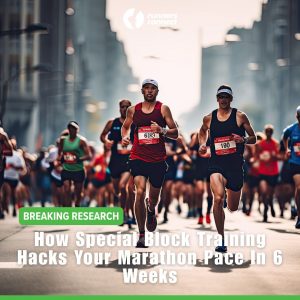Sometimes, it’s the simplest or most fundamental elements of training that both coaches and athletes overlook. When you’ve been training and competing for almost your entire life, it can be hard to think back to the basics. However, for many runners, especially those who are just getting started, it’s critical to learn and understand the fundamentals.
One of these basic, yet very important questions is: what should you be doing during the rest periods between hard repeats? Do you stand around, walk for a bit, or just keep on running?
The answer to the question isn’t as simple as it may seem, which is why I wanted to dedicate an article to the topic.
The manner in which you undertake your rest interval can impact how quickly you recover between repeats. Moreover, strategically manipulating the rest can offer unique training benefits and provide a new, challenging stimulus to stale workouts.
In this article, I’ll outline four different ways you can approach your rest intervals, the benefit and use case for each, and some unique ways you can mix up how you approach rest intervals to add a new stimulus to your training.
Standing rest
Generally, standing rests are best for when the rest interval is pitifully short, say 30 to 60 seconds. In these cases, you only have a few seconds after you catch your breath before you have to get back to running hard. Standing will allow you to recover as much as possible during your scant rest period.
Standing, or more accurately depicted as the hunched-over, hands-on-your-knees, sucking air pose, is not typically a resting position of choice. However, when you’re performing some intense workouts, there aren’t a lot of options available.
You should use the brief time between repeats to take a deep breath, calm your breathing, and mentally pump yourself up for another lap or two around the track.
Unique use case
The main drawback to using a standing rest all the time is that it doesn’t efficiently allow blood to flow to the muscles. After about 60 seconds, simply standing around will tighten your muscles and actually make it more difficult to get started again. Knowing this, we can use the standing rest to our advantage.
When training for the marathon, one of the goals is to prepare your mind and legs for that “dead” feeling that typically occurs after 18 or 20 miles. By strategically implementing a standing rest between long tempo intervals, for example 2 x 5 miles or 2 x 6 miles, you can simulate this feeling without having to first run 18 miles. As such, you’re able to prepare your mind and body for how to run through this feeling on race day. This is one of the hallmarks of the Hansons infamous 2×6 mile workout.
Walking rest
Walking is usually the best option for rest periods between one and three minutes. After the initial fatigue from finishing the previous repeat dissipates, walking slowly will help keep the blood flowing to your muscles without adding any additional aerobic stress.
If you’re still gasping for air as you walk about, put your hands on your head. Staying upright helps open the diaphragm, letting in precious oxygen.
In my opinion, walking is the default rest option and should probably be utilized the most frequently.
Slow jog rest
Sometimes you might have a rest interval that is anywhere from three to five minutes long, usually during some type of broken tempo run, like 3 x 2 miles with 3 minutes rest. In this case, because the rest is so long, utilizing a very slow jog after you’ve caught your breath is the best option.
Like walking, a slow jog helps keep the blood flowing through your legs and body, which will make the start of the next repeat a little less jarring to the body. In addition, slowly jogging is a good way to stay moving and make the workout feel more continuous.
In terms of pace, the slow jog should be more like a shuffle than a run. You’re not trying to set records or prove how tough you are – your goal is to get as recovered as possible for the next repeat. I often find that a pace about one or two minutes slower than your normal easy pace is a good fit.
Unique use case
Implementing a jogging rest can be a good way to “combine” workouts with a long run should you have a short training segment or miss a tempo run during the week. I often have athletes use a jogging (slightly slower than normal easy pace) rest between long, marathon pace repeats to combine both a long run and aerobic threshold effort. While you shouldn’t do this all the time, it can be an effective way to blend two workout goals.
A quick jog rest
Training for shorter events like the 5k and the 10k requires a blend of both speed and endurance. Running a workout of 6 x 800 meters in 3:00 with 2-minute rest is a great VO2max workout for someone trying the break 20 minutes for the 5k. However, it’s not very specific to the demands of the 5k since the 3 minutes rest allows you to effectively recover fully between each repeat.
A better workout to prepare specifically for the 5k would be something like 6 x 800 meters at goal 5k pace with a short jogging rest at 85 percent of marathon pace. An example for a 20 minute 5k runner would look like: 6 x 800 meters at 3:10-3:15 w/200 meters jogging (8:35 pace) rest between.
In this example, while the pace of the 800-meter repeats is slower than the VO2max session, the speed of the rest makes this workout much more difficult and 5k specific. In this instance, you’re teaching yourself how to run 5k pace with as little rest as possible.
By not fully recovering and jogging quickly between repeats you still improve your ability to run at race pace, but you ensure you have the aerobic strength and support to maintain goal pace on race day.
Don’t let the simplistic nature of a rest interval fool you. You can experiment with what you do during rest periods to change the nature and focus of any workout. It’s just one more way you can fine tune your training for optimal results.
A version of this article originally appeared on Competitor.com






4 Responses
Hi Jeff,
Good article. I was experimenting with another form of resting – lying down. I find that my heart rate drops much quicker and that I feel more refreshed after lying down for 60 sec compared to standing/walking for 60 sec.
I would like to hear your opinion on this. Just for interest sake.
Kind regards
Jaco
Hmm, interesting, I have never tried this. My worry would be how stiff you would get, but maybe the body can actually pump blood better laying down without having to fight gravity. I’d need to look more into this idea, by stimulating thought.
Hi Jeff, First off I just want to say that your website is very informative and really makes sense. I was wondering when doing VO2Max workouts what would be the general rule of thumb on recovery for 400m, 800m, 1000m, 1200m, and 1600 meter repeats? I heard through the grapevine that it’s 30 seconds for every 200 meters run is what you should do. So for example if your doing 800 meter reps the recovery should be 2 minutes. What should it be for those distances. Thank You, Ronnie
For Vo2 max that works as a good rule of thumnb